Last Updated on December 26, 2022 by Packoi Team
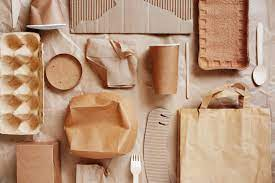
Thankfully, there are an array of options available, from biodegradable materials like paper and cardboard to plant-based solutions made from renewable sources. Today, we’ll discuss some of the best packaging options available today, from plant-based materials and paperboard containers to innovative new approaches like biodegradable bubble wrap. Not only will these options help protect your products during shipping but also ensure you are making an impact in protecting our planet and its precious resources.
Reusable Shopping Bags
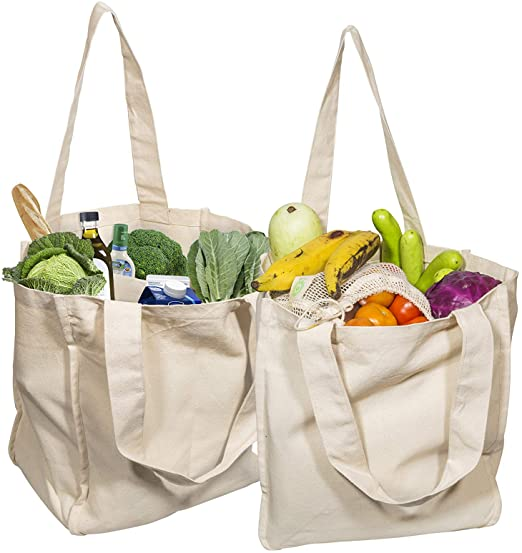
A smart alternative to plastic-based packing materials is switching to reusable shopping bags. These strong, durable, and infinitely recyclable bags provide a novel way to package your goods without harming the environment.
The most obvious benefit of reusable shopping bags is that they are made from natural materials like cotton, jute, or canvas which can be reused multiple times. This reduces the need for plastic packaging which is not only bad for the environment but also expensive to produce in large quantities.
Furthermore, these materials can be recycled after use to create new fabrics or products, ultimately leading to a circular economy in which resources are used more sustainably.
Reusable shopping bags also offer practicality and durability when compared with conventional plastic packaging. They are much stronger than their plastic counterparts and can carry heavier loads with ease.
In addition, they come in various sizes and shapes which makes them perfect for a wide range of applications. From grocery shopping to carrying books or clothes. Finally, they come with handles or straps that make them easy to transport from place to place without any hassle.
Although reusable shopping bags may seem more expensive than single-use plastic packaging at first glance, it’s important to remember that they last much longer and don’t require an additional purchase every time you need to pack something up. In this sense, they offer a cost-effective solution since you only need one bag instead of buying dozens of disposable plastics every month.
Glass or Stainless Steel Food Containers

Glass and stainless steel containers are eco-friendly packaging materials that offer multiple advantages over plastic containers. Glass is a great alternative to plastic for food packaging as it is non-toxic, recyclable, and reusable. It does not leach chemicals into food like some plastics do, making it much safer for you and your family.
Stainless steel is also becoming a popular choice for food packaging materials due to its durability and environmental benefits. Unlike plastic or even glass, stainless steel does not break down over time or become brittle with age. It also doesn’t contain toxins that can leach into food like plastic does, making it one of the safest options on the market today.
Glass is one of the best sustainable packaging materials as it’s made from mostly recycled material, stainless steel requires fewer resources during production– meaning less waste overall. Unlike plastic or paper containers that are thrown away after just one use, we can reuse stainless steel containers dozens or even hundreds of times before replacing them.
Beeswax Food Wraps

Beeswax food wraps are sheets of cloth coated with wax from honeybees. We can use them as biodegradable packaging materials as they make the perfect alternative to disposable plastic wrap or aluminum foil for storing food. The beeswax allows the wraps to be molded around containers, bowls, and other items for airtight sealing. It also helps preserve foods because it blocks out odors and moisture while still allowing air to circulate.
Unlike disposable plastic wraps, beeswax food wraps are reusable and biodegradable. That means they won’t end up in landfills like so much single-use plastic packaging does every day. Their production also uses fewer resources than that of traditional plastics; beeswax requires no energy-intensive manufacturing processes and its source material (honey) can be sustainably harvested without harming the environment or wildlife.
Since this loose-fill packaging does not require any additional materials like boxes or bags, beeswax wraps have a smaller environmental footprint than many other types of storage products on the market today.
You can use beeswax food wraps just like traditional plastic wrap or aluminum foil – but with much less waste. Simply mold the wrap around any container or bowl you want to store in the refrigerator or pantry – it will create an airtight seal that keeps your food fresh longer.
Additionally, since beeswax is water resistant, you can even use them as placemats or sandwich bags. Not only do they make packing lunches easy but they also give them a unique look that kids love. If you want to use them as placemats just rinse them off after each use and let them air dry; if you want to use them as sandwich bags just wipe them down with a damp cloth when you’re done using them.
Beeswax food wraps are flexible enough to conform around any shape without tearing or ripping. They also create an airtight seal around whatever you’re storing which helps keep food fresher longer than other storage options like plastic wrap or aluminum foil.
Compostable Packaging Materials
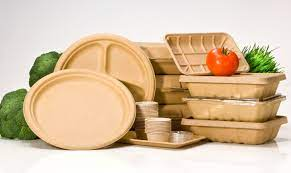
Compostable packaging materials are made from natural, biodegradable materials like paper, cardboard, and plant-based plastics. Not only is it better for the environment, but it’s also cost-effective and can help your business stand out from the competition.
For starters, these sustainable materials are made from recycled waste that can be broken down quickly and easily in nature. When these packing materials are disposed of properly, they will not harm the environment or contribute to pollution as plastic does. Additionally, compostable packaging materials can be used in a range of applications including food and beverage containers, labels, and even medical devices.
The production process for this type of material requires less energy than traditional plastics which leads to a reduction in emissions.
By choosing compostable packaging you’re sending a message that you care about the environment and want to do your part to reduce waste. This will resonate with customers who are looking for products that have been produced sustainably and ethically – giving you an edge over competitors who may not use compostable materials yet.
If you want to experience compostable product packaging, research different compostable materials to find something that meets both your budget and sustainability goals. Once you’ve chosen the right material for your needs, work with a company that specializes in custom packaging design on compostable substrates so that your design looks great on the finished product. Also make sure you have clear instructions on how customers should dispose of their packages (e.g., home composting or commercial recycling centers) to reduce their carbon footprint.
Biodegradable Garbage Bags
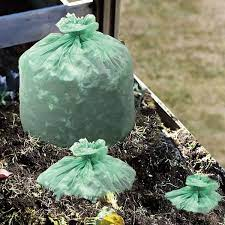
Biodegradable garbage bags are made from renewable materials, making them a more eco-friendly option than traditional packaging. These garbage bags are often made from plant-based materials such as cornstarch, potato starch, or vegetable oil derivatives.
The key difference between these recycled materials and regular garbage bags is that biodegradable garbage bags will break down over time when exposed to sunlight, heat, and moisture. Waste management authorities can safely compost these sustainable materials and reduce the amount of waste sent to landfills.
The biggest benefit of using biodegradable garbage bags is that they reduce our dependency on single-use plastics. Any waste placed in these biodegradable bags will not accumulate in landfills or oceans for years on end as traditional plastic does.
What’s more, this packaging and cushioning material is designed to break down quickly when exposed to sunlight and moisture, so there’s less packaging waste.
Recycled Paper Products
As the name says, this paper packaging is made from recycled materials and requires significantly less energy compared to those made from new materials. As a result, there are fewer greenhouse gas emissions associated with the production of this packaging material.
In addition, because the raw materials used in the production of recycled paper products come from post-consumer waste; no need to create more waste by extracting new materials from the earth.
The production of paper from virgin wood pulp requires large amounts of water for processing and bleaching. On the other hand, recycled paper uses significantly less water than its non-recycled counterpart since it is already processed and bleached. This difference helps conserve water and limit our dependence on energy-intensive water treatments.
By using post-consumer waste as source material for producing new paper products, we can ensure that these limited resources are not depleted too quickly or needlessly discarded into landfills. Also, fact check: recycling one ton of cardboard saves 17 trees – so why not contribute to this good cause?
Bamboo Packing Bags
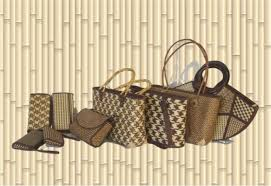
Bamboo is classified as a grass, meaning it grows much faster than trees, with some species growing as tall as 39 feet in just six months. This means that bamboo is a renewable resource; when harvested, it can quickly grow back. In addition, no chemicals or fertilizers are used in cultivating bamboo, so it’s surely a sustainable choice for packaging materials.
Plastic packaging can take up to 1000 years to break down in landfills, pretty long, right? But the good thing is, bamboo breaks down naturally within 2–5 years, and you won’t damage the environment any further.
Once your packaging has served its purpose, you can recycle or compost it. Bamboo products also don’t require harsh chemicals during the manufacturing process like many recycled plastics do—which helps further reduce its environmental impact.
Perhaps one of the most important benefits of using bamboo packing materials is its ability to reduce your carbon footprint significantly. Bamboo actually absorbs more CO2 than other plants while releasing 35% more oxygen into the atmosphere than trees. By using this natural material over plastic-based alternatives, businesses can drastically reduce their carbon emissions and become more sustainable overall.
Corrugated Bubble Wrap

In the packaging industry, plastic is the material of choice because it’s cheap, malleable, and lightweight. However, the alarming environmental impact of single-use plastics calls for a safer alternative and corrugated bubble wrap fits the bill here.
This bubble wrap is made from corrugated cardboard, which is 100% recyclable and biodegradable. These characteristics of corrugated material help reduce energy consumption since it’s lighter than plastic packaging materials, meaning less fuel needs to be used in transportation and shipping processes.
Corrugated bubble wrap also offers superior protection against impacts during shipping compared to traditional plastic packaging materials. This is due to its combination of cushioning bubbles and reinforced cardboard walls that offer maximum product protection while still remaining lightweight and easy to store or transport.
Since this layered bubble wrap is lightweight, businesses need less fuel during its shipping or storage. Corrugated bubble wrap can be reused multiple times, so if you want to put forward a sustainable business, it is a smart substitute for the plastic waste of traditional packaging.
Cornstarch Packaging
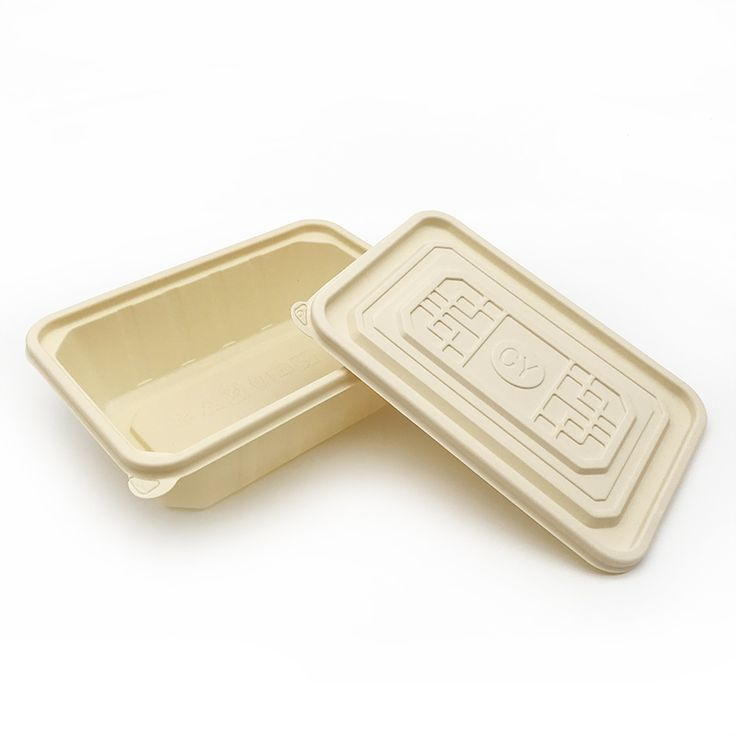
Cornstarch packaging is made from a combination of corn starch, natural polymers, and often additives that provide improved durability. It is created by combining corn starch with water and heating until a paste-like consistency form. This paste is then molded into different shapes or extruded through a die to produce long strands (similar to spaghetti) that can be cut into desired lengths and shapes. The company that designs your cornstarch custom boxes will print the finished product with standard printing methods and then seal it using heat.
Cornstarch packaging is suitable for food or medical supplies, but its main application is for consumer goods such as cosmetics, toys, electronics, clothing, etc. Another common use for this packaging is bags and wraps for foods like chips, candy, nuts, dried fruits, mushroom packaging, etc. This material also makes a great option for biodegradable packaging peanuts and single-use food containers.
Cornstarch boxes and bags are made from renewable resources like corn instead of petroleum derivatives (used in plastic bags). Therefore, their production process results in far fewer greenhouse gas emissions. Likewise, because cornstarch packaging will break down faster when exposed to extreme temperatures or moisture levels, there’s less worry about it leaching toxic materials into the ground or water.
Conclusion
When it comes to packaging alternatives for plastic, biodegradable and recycled plastic options are becoming more available. Companies have started using biodegradable plastic bags and containers that break down much faster than the traditional kind of plastic that was previously used. Moreover, companies are choosing to use recycled plastics and biodegradable options when producing product packaging in an effort to be more sustainable.
Biodegradable and recycled packaging solutions are effective and more economical than traditional plastics in many instances, showing that being responsible for the environment does not always imply higher costs. All in all, environmentally conscious brands can now opt for a variety of sustainable solutions when it comes to choosing which type of packaging they will use.
Ready to Make Your Business Sustainable? Start With Your Product Packaging!
With sustainability becoming increasingly important to businesses, many companies are looking for reliable options for packaging made from quality materials. Packoi Printing offers packaging solutions that strike the perfect balance between quality and sustainability. Our eco-friendly packaging boxes and bags are customs tailored to suit your individual needs. Whether you have an idea or need inspiration, our team of experienced professionals will work together with you to ensure that your brand voice is brought to life through package design. Stop using unsustainable packaging and call us at Packoi Printing – we are here to provide you with the best sustainable packaging solutions!




